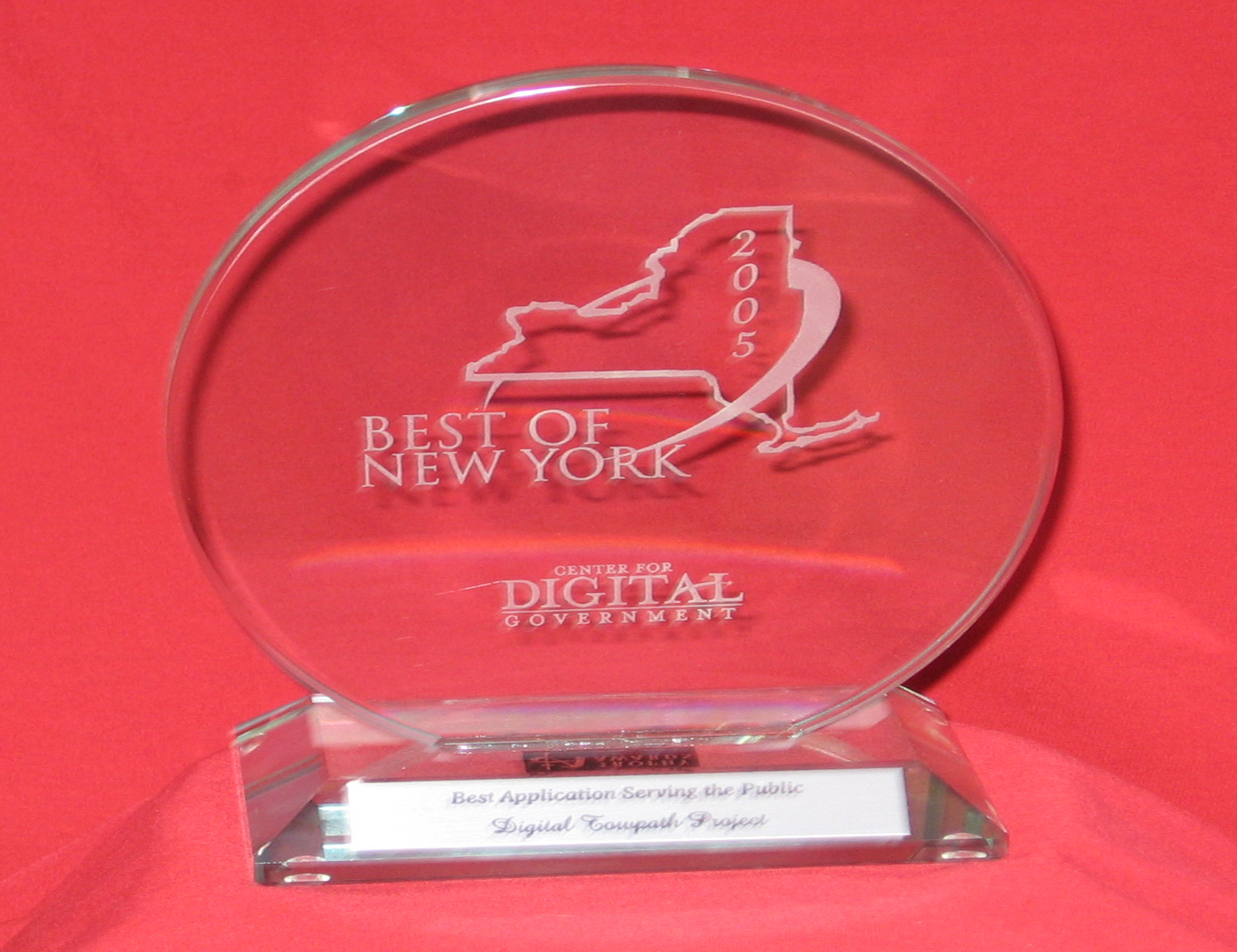The Evolution of Digital Towpath
Digital Towpath was born out of the frustration that local government officials in small and rural towns and villages experience in their attempt to provide full-time services with part-time resources. Of the nearly 1600 governments in New York, more than 1000 serve populations of less than 5000 residents. Nearly 300 governments serve communities of less than 1000 residents. Most officials in these small communities work a few hours a week or month. Few work full-time. In some communities no one holds a full-time position. These jobs are more volunteerism than vocation.

In 1998, officials from ten municipalities in northern Oneida County met with staff from the Office of Continuing Professional Education at SUNY Institute of Technology in Marcy (SUNYIT/CPE) to explore ways they might bring use of the internet into the equation. SUNYIT/CPE was working with Niagara Mohawk/National Grid (NMNG) through their Community Development Department to explore establishing commercial websites to stimulate economic development in the NMNG service area. When the local government officials and SUNYIT/CPE suggested to them that supporting the development of municipal websites could further their objectives as well, NMNG agreed to support the initial stage of Digital Towpath development.
By concentrating on what all towns and villages have in common, the pioneer group of local officials worked with a website developer to devise a web-based website content management system that addressed both the need for specific functionality and the realities of the business process in small, rural governments. Because the Digital Towpath software is web-based, the local governments do not need special equipment or local software, other than an internet browser, to use it.
The first ten Digital Towpath websites went live during 2000. The second group of towns and villages had their websites online the next year. By 2003, there were about 30 Digital Towpath municipal websites. As we had hoped, they bridged the gap between the full-time need for government services and the part-time availability of local government resources. NMNG withdrew from Digital Towpath, transferring support of the code behind the project at the time to Northern Publishing Inc. (NPI), after contracting with them to stabilize the original code base.
 Technologies in website construction and function had changed radically in the six years since Digital Towpath’s initial design. The user group was not large enough to sustain the system financially because the participants were determined to keep the cost of membership low enough that even the smallest local governments could participate, even after this fee was no longer subsidized by NMNG. The software was stable but out-dated, unable to support a larger user base. NPI supported the existing websites and SUNYIT/CPE supported the administration of the group, both investing their own funds because they believe in the project, while we looked for a way to keep the project going.
Technologies in website construction and function had changed radically in the six years since Digital Towpath’s initial design. The user group was not large enough to sustain the system financially because the participants were determined to keep the cost of membership low enough that even the smallest local governments could participate, even after this fee was no longer subsidized by NMNG. The software was stable but out-dated, unable to support a larger user base. NPI supported the existing websites and SUNYIT/CPE supported the administration of the group, both investing their own funds because they believe in the project, while we looked for a way to keep the project going.
Most of the original Digital Towpath communities are members of the Northern Oneida County Council of Governments (NOCCOG). In support of their members, NOCCOG applied for and received a grant from the Local Government Records Management Improvement Fund through the NYS Archives for the 2004 – 2005 cycle. This grant funded a major update of the software. By utilizing modern technologies, the software was rewritten to accomplish some of the most frustrating tasks, like image manipulation, that had plagued the users of the older version; to provide further customization opportunities; and to add multiple levels of administrative access.
Through volunteers, continued support from SUNYIT/CPE, and word of mouth advertising, Digital Towpath spread out from Oneida County and across the state so that now there are over 130 Digital Towpath websites serving a total population of more than 650,000 residents, largely from the most rural portions of our state.
The Digital Towpath project was recognized by awards received during 2005 for Best of New York: Application Serving the Public from the Government Technology Center and Best Practices: Policy from the NYS Forum for Information Resource Management
Also, at our 2005 annual meeting, the group decided that we should formalize our structure so that we can cope with rapid expansion and to continue the cooperative effort to secure grant funding with which to support additional functionality for the software. Many of the participating municipalities took the lead, passed resolutions, and signed an inter-municipal agreement, forming the Digital Towpath Cooperative (DTC) under NYS General Municipal Law, Article 5.
This new government entity now governs the Digital Towpath Project through its Board, which meets periodically to deal with the day to day tasks, and the annual meeting of the entire membership, where larger issues are decided. User support is provided through administrative contracts and much user support is provided by other users.
The website databases of all the user communities reside on the same servers as the Digital Towpath software. The Digital Towpath computers and equipment are housed in a secure facility in Syracuse, NY.
Digital Towpath Featured in Government Technology Magazine
Article: Assessing Shared IT Services Today
